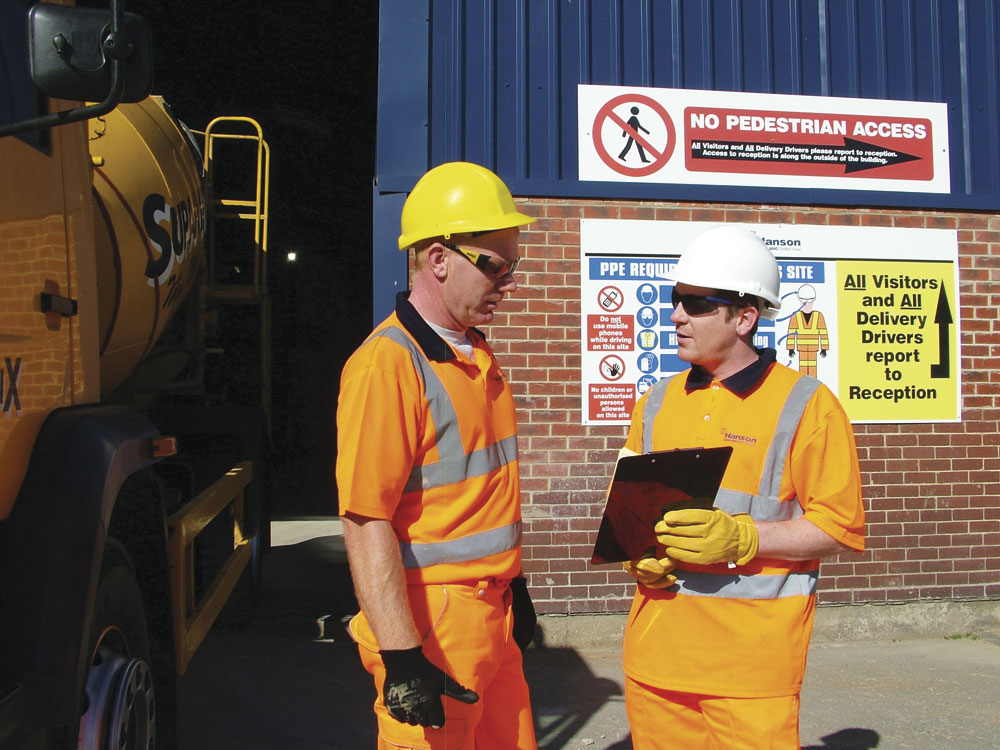Aiming for Zero Harm

Quarries are becoming safer. Statistics from the Mineral Products Association show that reportable injuries (those resulting in more than three days off work) have fallen by more than 80% since 2000. And Hanson UK are taking this a step further. The company is adopting a ‘zero harm’ approach to working safety across all its business lines as part of its 2020 targets, as Paul Lacey, head of sustainability, explains.
Over the last few years there has been a shift change in health and safety performance across the quarrying industry from a dependent culture, where people are told what to do and how to do it, to one of interdependence where everyone looks out for each other.
The basic premise is that no-one passes by an unsafe act or condition without challenging it – a philosophy built around the principle of visible felt leadership, established by DuPont in the 1990s and introduced into Hanson in 2003.
At its heart is the safety conversation where managers and peers observe a person doing a job and then discuss the safety and environmental positives, and any areas for improvement. It is conversational not confrontational, and any actions required are recorded for follow-up. The value is in the discussion, not the observation or the paperwork – we are thinking and talking about safety and we do not need to be an expert. Some of the best observers are those not familiar with the task.
These safety conversations have been implemented across all areas of our business and the effects have been dramatic. Between 2009 and 2011 lost-time injuries (LTIs) decreased by more than 50% and our target is a 13% year-on-year reduction to our ultimate goal of zero harm. We are now moving this on a stage further and introducing sustainability conversations which will broaden the area to include environment as well.
In the past up to 45% of LTIs have involved contractors, so we have introduced prequalification procedures – right down to individual employees – to ensure they comply with our strict health and safety policy. We use the PICS (Pacific Industrial Contractor Screening Ltd) database to pre-qualify contractors to conform to our control of contractors’ procedures.
We believe that the full involvement of safety representatives and safety committees contributes tremendously to overall safety standards and performance through consultation, innovation and involvement. Competence is also an essential discipline and we invest heavily in training and education to meet the requirements of the Mineral Products Association’s Safer by Competence targets.
To underpin this effort, a comprehensive integrated management system (IMS) was launched last year across all our operations, integrating 19 separate systems into one which is accredited to ISO 9001, 14001 and 18001. Essentially, it is a system of responsibilities, rules, procedures and safe working practices which provide the backbone of effective health and safety, environment and quality management.
Part of this is to ensure we are prepared for all eventualities, so that if accidents do occur our response is quick and effective. Recently, we have been carrying out a series of on-site simulations with the emergency services to test the procedures we have in place.
A crash rescue exercise held at Kings Dyke Quarry, in Whittlesey, near Peterborough, had ‘real’ casualties to treat instead of accident mannequins. Six St John Ambulance volunteers played the injured in an hour-long practice based around a collision between a 4x4 vehicle and a lorry trailer. Hanson first-aiders were faced with simulated chest wounds, spinal injuries, minor cuts and a diabetic emergency. It was a successful test of the accident procedures in place as well as giving a greater appreciation of the strategies required for difficult rescues.
Our aim is to be a leading sustainable business, trusted and respected for the ethics we adopt and the products we supply. We will ensure that our employees have the training and competence to take responsibility for health and safety, environment and quality, which form our overall approach to sustainability.
Case study – Maxi hatch
In addition to promoting the type of behaviour that leads to the elimination of accidents, Hanson are investing in resources to improve safety performance.
As part of this process, we set up a working group to look at the risks associated with cleaning concrete truckmixer drums. It is vital to remove the dangerous hardened concrete build-up inside the drums to maintain efficiency and keep the vehicles within their legal payload.
One of the major obstacles is entry into the drum; the ‘pig’s ear’ at the top is 12ft off the ground with no handrails for safe access, and manholes, if fitted, are small and difficult to negotiate.
Many potential solutions were investigated but none gave complete safety reassurance until the team came up with the idea to fit a bigger, hinged door to replace the manhole inspection hatch, along with a small platform to allow safe and easy access. The design was finalized and a Maxi hatch was fitted by manufacturer McPhee to two mixer drums for trials.
The Maxi hatch has proved to be a winner and now forms part of the standard safety specification for all our new truckmixers and is also being retrofitted to our existing fleet. It won a top prize at the Mineral Products Association’s health and safety awards and has been so successful in minimizing the risk to users that many of our competitors are adopting a similar approach.


